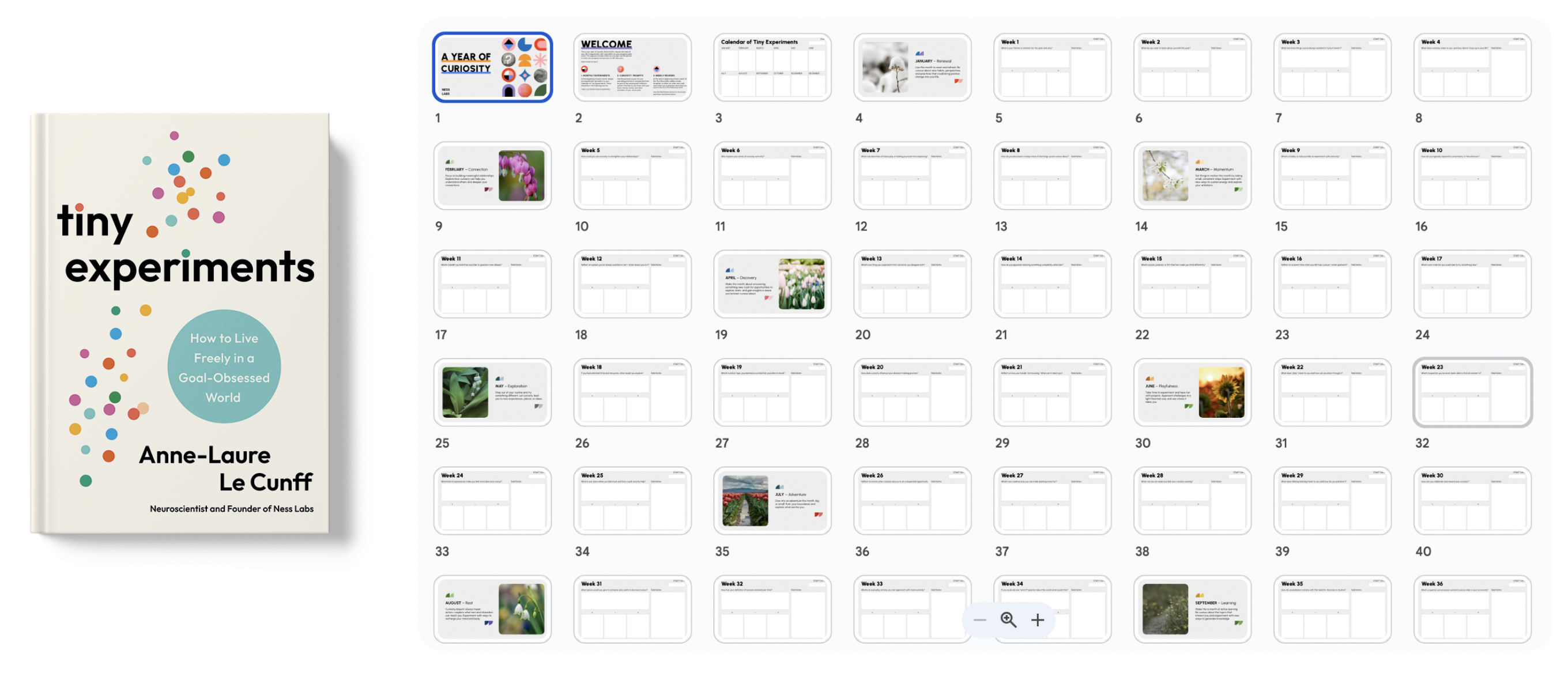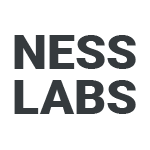Pre-order your copy of Tiny Experiments before January 7, 2025 to receive the Year of Curiosity worksheet with 52 curiosity prompts, 12 monthly themes, and fillable weekly review templates.

New technologies, new ways of working, new modes of communication… Each new year is a reminder that the world is changing faster than ever. And it can feel like it’s impossible to keep up.
Fortunately, curiosity can help us keep up. When we experiment and stay open to uncertainty, we’re better equipped to handle whatever comes our way. Instead of feeling overwhelmed, we can see these changes as interesting challenges to explore.
What would your life look like if curiosity was your default mode of thinking? What kind of personal and professional growth could you unlock if any doubt became an opportunity for self-discovery? Let’s explore how you can design a year of curiosity.
The Art and Science of Curiosity
Recent research shows that curiosity does more than help us learn – it makes us better at solving problems, connecting with others, and adapting to change. It suggests that nurturing your curiosity might be one of the most effective investments you can make in yourself.
When we encounter something new and interesting, our brains release dopamine – the same neurotransmitter associated with reward and pleasure. This creates a simple pattern: the more we learn, the more we want to learn.
This drive to explore and understand isn’t just nice to have – it’s essential to who we are as humans. Every major breakthrough, from early tools to modern technology, started with someone asking “What if?” or “How does this work?”
In the same way, this experimental mindset – always asking questions, trying new approaches, and learning from the outcomes, even if they’re unexpected – can become your compass in navigating our ever-changing world.
Many of us make less space for curiosity as we get older. We get busy, fall into routines, or worry about looking like we don’t know enough. The good news is: curiosity is a skill we can rebuild at any age.
There’s no single “right” way to be curious. Learning practical skills like coding or cooking, diving into topics like history or science, joining groups of people who share your interests… These are all great ways to inject more curiosity into your life.
The key is asking questions and trying things out. Instead of thinking “I should already know this” when you don’t understand something, it’s about seeing doubt as an interesting puzzle to solve. And there are simple ways you can nurture this mindset all year round.
Designing a Year of Curiosity
Designing a year of curiosity means creating small, manageable habits that keep curiosity alive in your everyday routines. This way, you can ensure that curiosity becomes a natural part of your life instead of an afterthought.
• Monthly: Design one tiny experiment at the beginning of each month This could be as simple as exploring a topic you know nothing about, trying a new hobby, or doing something that pushes you out of your comfort zone. The goal isn’t mastery – it’s discovery. Think of it as giving yourself permission to follow a question for a few weeks and see where it leads.
• Weekly: Every week, take 10 to 15 minutes to conduct a weekly review. What went well this week? What didn’t go as planned? What will you focus on next week? This could mean doubling down on what worked or tweaking something that didn’t. Week after week, these moments of reflection will help you build momentum even if you don’t have a clear destination.
• Daily: Create at least one moment of curiosity in your day, no matter how small. Experiment with a new recipe or tool, have one meaningful conversation, try a journaling prompt, or take a different route to work. Even one minute of curiosity a day can add up to a much richer life.
Designing a year of curiosity doesn’t have to be complicated or time-consuming. It’s about making small, intentional choices to incorporate curiosity into your monthly, weekly, and daily routines so you can make space for growth and discovery – no matter how busy life might get.
At the end of the year, you want to be able to look back, not in awe of everything you accomplished, but in awe of how much you’ve learned and changed.
Equipped for Curiosity
A bit of scaffolding can help to make curiosity a year-long habit. You need more than motivation – you need a support system that works for you. Here are some practical ways to help make curiosity a regular part of your life this year:
- Tools. Equip yourself with tools that facilitate curiosity. Note-taking apps like Notion, Obsidian, or Roam can help you connect and organize your ideas. Your calendar can also help prioritize curiosity by timeshielding “curiosity hours” for reading and research.
- Templates. You don’t need to reinvent the wheel. Try different templates for self-reflection, creativity, and productivity. Feel free to mix and match from templates others have created to build your ideal system.
- Teachers. Whether they’re authors, podcast hosts, or course instructors, great teachers can fuel your curiosity throughout the year. Take online courses. Join learning communities. Find books and podcasts that talk about topics you’re interested in.
And consider becoming a teacher yourself! Sharing what you’ve learned is one of the best ways to deepen your knowledge. Whether you start a blog, a newsletter, or just share your thoughts with friends, learning in public will encourage you to think more critically and creatively about topics you’re curious about.
Curiosity is a skill we can all practice. Whether you’re asking more questions, exploring new topics, or stepping outside your comfort zone, tiny experiments can add up to big changes. So, what will you discover this year? There’s only one way to find out – start exploring!
Pre-order your copy of Tiny Experiments before January 7, 2025 to receive the Year of Curiosity worksheet with 52 curiosity prompts, 12 monthly themes, and fillable weekly review templates.
